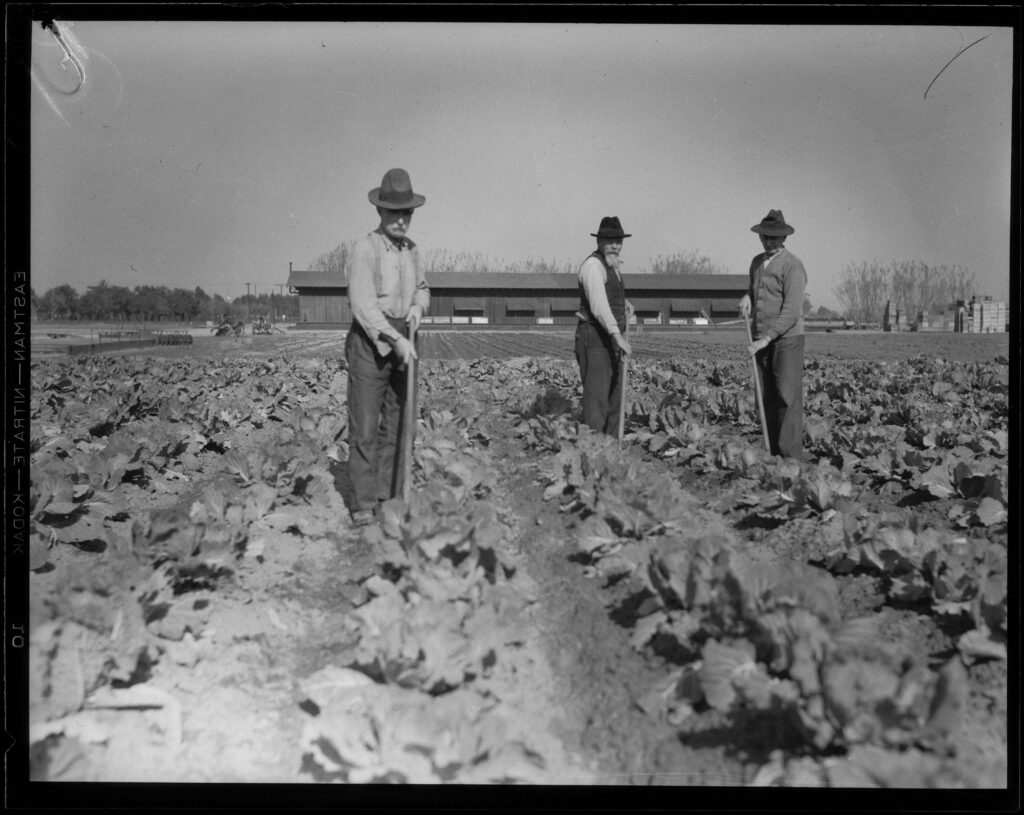If you grew up in SouthEast L.A., chances are you’ve heard about the“abandoned Insane Asylum” in Downey. But is this location’s reputation true? What’s the actual history of this place? These ruins are what remains of what used to be called the L.A County Poor Farm.
A “poor farm” was a farm founded and run by local governments to house, support and employ needy people, who were often the elderly and disabled. These farms had fields and livestock that were looked after by the more able-bodied residents; the products of the farm both supplied the farm with food and funds, as any surplus was sold for profit.
In 1887 the L.A. County Board of Supervisors voted build such a farm near the small town of Downey and purchased 124 acres of farmland. The land was cleared, roads built, and buildings erected to house employees and the “inmates” as the residents were called.
The first “inmates” arrived the next year and were under the care of Superintendent Dr. Edwin Burdick, a doctor with farming experience. After a few years, the farm was growing produce and raising livestock.

Photo Credit: UCLA Charles E. Young Research Library
Over the next few decades, the farm grew to 400 acres and more buildings were erected as the farm became a catch-all institution for various ailments; from mental illness to asthma and alcoholism. The farm received lots of praise for the success and growth of the campus; health advocates from all over the country would visit to learn about the farm and its novel setting.
However, not everything was as positive as it seemed; there were reports of inmate abuse and a few patients actually ended their own lives. This led to an investigation and sweeping changes into the treatment of the inmates.
In 1915, William Harriman was appointed superintendent to make some of these positive changes. He started by changing the name of the farm to “Hondo” after the Rio Hondo River that ran through the land and called the residents patients instead of inmates. He oversaw various improvements to the farm, including the addition of a new auditorium, admin building, and 2 psychopathic wards. The farm also continued to thrive, winning prizes for its dairy cows and draft horses.
In 1929, the number of patients was around 2,000 with more being transferred from the County Hospital. The Great Depression hit the farm hard; funding disappeared and the number of patients exploded, leading to the building of a tent city that would be used for decades.
The farm was again renamed in 1932 to “Rancho Los Amigos” and shifted focus to rehabilitation and medicine. By 1934 the campus had grown to 540 acres and housed over 2,700 patients. The Social Security Act of 1935 and arrival of World War II resulted in many of the elderly patients of the hospital moving into nursing homes and the able-bodied finding jobs supporting the war effort.
Near the end of the war, the first polio patients were transferred to Rancho and the hospital established a Polio ward that would led it to become one of the best polio treatment and rehab centers in the country. By 1951 it was considered a premier hospital, and the poor farm aspects of the campus were shut down in the following years.
Over the next 6 decades, the hospital continued to grow, repeatedly ranking among the nation’s leading rehabilitation centers. However, much of this growth was focused on the North Campus of the hospital; as most of the buildings in the South Campus were abandoned in the 1980s and except for one, have been left to slowly decay.
This led to Urban legends emerging about the deserted south campus. stories of the abandoned “insane asylum” have been repeated as well as tales of grisly things that occurred there. These rumors were further reinforced in 2006 when a group of Marines found a box full of mummified body parts while using the vacant campus for training. But as we’ve learned, the history and focus of this facility was much broader than what the urban legends say.
In 2020, the board of Supervisors voted to demolish much of the property to make way for new county facilities, saving only saving 4 buildings for historic purposes. Only time will tell if the urban legends about this place will continue now that much of the original structures are gone.
References:
“Ranch of the Friends: The Extraordinary Evolution of the L.A. County Poor Farm” by Hadley Meares, KCET. March 30, 2015.
“The Ghostly Remnants of the Old LA County Poor Farm” by Janey Ellis, atomicredhead.com February 25, 2020.
“Take a Look Inside Downey’s Creepy Abandoned Asylum” by Thomas Harlander, Los Angeles Magazine. September 16, 2015.
“Decades-Old Body Parts Found in Abandoned Downey Hospital; No Foul Play, Officials Say” by J. Michael Kennedy, The L.A. Times. October 5, 2006.

